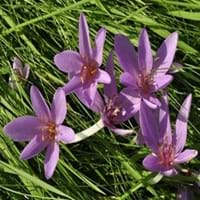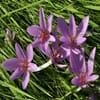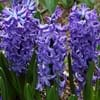Life Span
Perennial
Perennial
Type
Bulb or Corm or Tuber
Tree
Origin
Hybrid origin
Northeastern United States, Mid-Atlantic United States, Southeastern United States, Central United States
Types
boissieri , cupanii , hungaricum , kesselringii
Ardis, Arnold, Aureomarginatum
Number of Varieties
Not Available
Habitat
Temperate Regions
Bluffs, low mountains, Moist Soils, Woodlands
USDA Hardiness Zone
Not Available
5-9
AHS Heat Zone
Not Available
9-2
Sunset Zone
21,22
1a, 1b, 2a, 2b, 3a, 3b, 4, 5, 6, 7, 8, 9, 10, 11, 12, 14, 15, 16, 17, 18, 19, 20, 21, 22, 23
Habit
Clump-Forming
Pyramidal
Flower Color
Purple, Violet
Orange, Light Yellow
Flower Color Modifier
Bicolor
Bicolor
Fruit Color
Not Available
Lime Green, Brown
Leaf Color in Spring
Green
Green, Light Green
Leaf Color in Summer
Light Green
Green
Leaf Color in Fall
Several shades of Green
Yellow, Light Yellow, Yellow green
Leaf Color in Winter
Light Green
Not Available
Leaf Shape
Long Linear
Irregular
Plant Season
Spring, Fall
Spring, Fall
Sunlight
Full Sun, Partial Sun
Full Sun, Partial Sun
Growth Rate
Medium
Medium
Type of Soil
Loam
Clay, Loam
The pH of Soil
Acidic, Neutral
Acidic, Neutral
Soil Drainage
Well drained
Average
Bloom Time
Late Summer, Early Fall
Late Spring
Tolerances
Drought
Soil Compaction
Where to Plant?
Ground
Ground
How to Plant?
Divison, From bulbs, Seedlings
Seedlings
Plant Maintenance
Medium
Low
Watering Requirements
Keep ground moist
Do Not over Water, Keep the ground moist but not water-logged, Requires regular watering
In Summer
Lots of watering
Ample Water
In Spring
Moderate
Moderate
In Winter
Average Water
Average Water
Soil pH
Acidic, Neutral
Acidic, Neutral
Soil Type
Loam
Clay, Loam
Soil Drainage Capacity
Well drained
Average
Sun Exposure
Full Sun, Partial Sun
Full Sun, Partial Sun
Pruning
no pruning required
Prune ocassionally, Remove dead branches
Fertilizers
All-Purpose Liquid Fertilizer
All-Purpose Liquid Fertilizer, fertilize in spring, Fertilize the soil instead of direct applying, Mulch
Pests and Diseases
Dry root rot, Pest Free
fusarium canker, nectria canker, yellow-poplar weevil
Plant Tolerance
Drought
Soil Compaction
Flower Petal Number
Single
Not Available
Foliage Texture
Coarse
Coarse
Foliage Sheen
Glossy
Matte
Attracts
Whiteflies
Birds
Allergy
Poisonous to grazing animals
no allergic reactions
Aesthetic Uses
along a porch, deck or patio, Borders, Mixed Border, small hedge
Showy Purposes
Beauty Benefits
No Beauty Benefits
Not Available
Environmental Uses
Air purification
Shadow Tree, Shelter for wildlife
Medicinal Uses
anti rheumatic, cathartic
Arthritis, Digestion problems, Fever, Inflammation, Wounds
Part of Plant Used
Root
Whole plant
Other Uses
Showy Purposes
Food for animals, Grown for shade, Used as Ornamental plant, Used in Furniture
Used As Indoor Plant
No
No
Used As Outdoor Plant
Yes
Yes
Garden Design
Container, Cutflower, Foundation, Lawns and Turf, Mixed Border
Feature Plant, Shade Trees, Street Trees
Botanical Name
COLCHICUM 'Lilac Wonder'
LIRIODENDRON tulipifera
Common Name
Hybrid Autumn Crocus, Hybrid Meadow Saffron
Tulip Poplar, Yellow Poplar
In Hindi
meadow saffron
ट्यूलिप पेड़
In German
Herbstzeitlose
Tulpenbaum
In French
Colchique d'automne
tulipier
In Spanish
Estado de conservación
árbol de tulipán
In Greek
meadow saffron
δέντρο τουλίπα
In Portuguese
Colchicum autumnale
árvore de tulipa
In Polish
Colchicum autumnale
tulipanowiec
In Latin
autumnale
Tulipa arbore
Phylum
Tracheophyta
Tracheophyta
Class
Magnoliopsida
Magnoliopsida
Order
Liliales
Magnoliales
Family
Liliaceae
Magnoliaceae
Genus
Colchicum
Liriodendron
Clade
Angiosperms, Monocots
Angiosperms, Magnoliids
Tribe
Not Available
Not Available
Subfamily
Not Available
Not Available
Number of Species
Not Available
Season and Care of Meadow Saffron and Tulip Tree
Season and care of Meadow Saffron and Tulip Tree is important to know. While considering everything about Meadow Saffron and Tulip Tree Care, growing season is an essential factor. Meadow Saffron season is Spring and Fall and Tulip Tree season is Spring and Fall. The type of soil for Meadow Saffron is Loam and for Tulip Tree is Clay, Loam while the PH of soil for Meadow Saffron is Acidic, Neutral and for Tulip Tree is Acidic, Neutral.
Meadow Saffron and Tulip Tree Physical Information
Meadow Saffron and Tulip Tree physical information is very important for comparison. Meadow Saffron height is 12.70 cm and width 20.30 cm whereas Tulip Tree height is 1,830.00 cm and width 1,070.00 cm. The color specification of Meadow Saffron and Tulip Tree are as follows:
Meadow Saffron flower color: Purple and Violet
Meadow Saffron leaf color: Green
Tulip Tree flower color: Orange and Light Yellow
- Tulip Tree leaf color: Green and Light Green
Care of Meadow Saffron and Tulip Tree
Care of Meadow Saffron and Tulip Tree include pruning, fertilizers, watering etc. Meadow Saffron pruning is done no pruning required and Tulip Tree pruning is done Prune ocassionally and Remove dead branches. In summer Meadow Saffron needs Lots of watering and in winter, it needs Average Water. Whereas, in summer Tulip Tree needs Ample Water and in winter, it needs Average Water.





